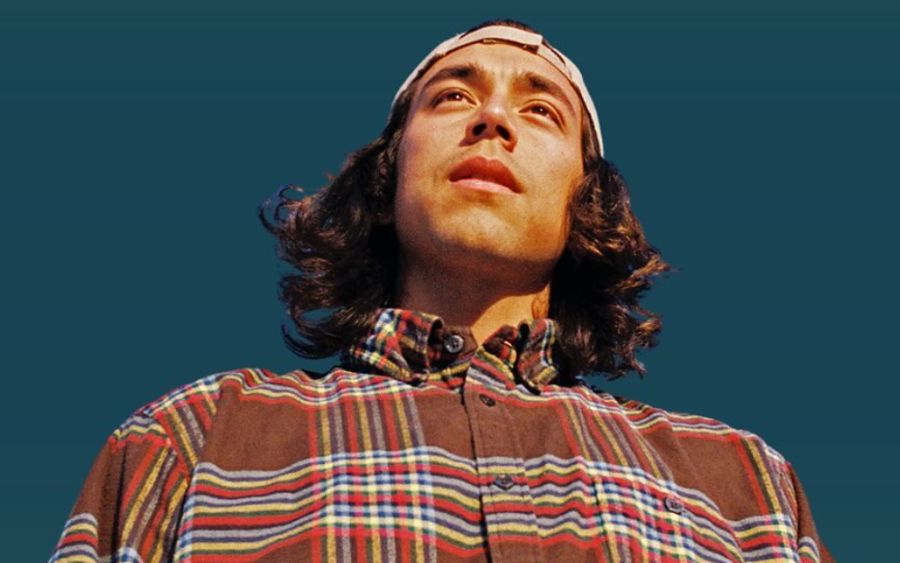
- Details
- By Kaili Berg
Their work not only celebrates Indigenous identity but also preserves and shares the stories, cultures, and perspectives of Native communities. Here are ten Indigenous artists and musicians whose contributions continue to inspire and empower.
Jason Baerg (Cree Métis) - Visual Artist
Jason Baerg is a pioneering Cree Métis artist known for his innovative approach to painting, laser-cut imagery, and fashion. His recent work at Art Toronto and his recognition in Vogue as an Indigenous “Artist to Know” highlights his influence in the contemporary art scene. Baerg’s work combines traditional Indigenous storytelling with futuristic aesthetics, creating a visual experience that challenges and captivates.
Buffy Sainte-Marie (Cree) - Musician, Activist
A legendary folk musician, Buffy Sainte-Marie’s voice and lyrics have been anthems for Indigenous rights and social justice since the 1960s. With hits like “Universal Soldier” and “Bury My Heart at Wounded Knee,” her music tackles issues such as war, human rights, and the preservation of Indigenous cultures. Sainte-Marie remains a powerful voice for activism through art.
Tania Larsson (Gwich’in) - Jewelry Artist
Tania Larsson’s jewelry embodies her connection to Gwich’in culture and the Arctic landscape. Her pieces often feature materials such as caribou antler and seal skin, merging contemporary design with traditional craftsmanship. Her art honors her ancestors and brings attention to environmental and cultural preservation issues affecting her homeland.
Mato Wayuhi (Oglala Lakota) - Musician, Composer
Mato Wayuhi, a dynamic artist in music and film, is best known as the composer for the acclaimed TV show Reservation Dogs. His music blends hip-hop and Indigenous sounds, creating tracks that resonate with Native youth and wider audiences alike. His work on Reservation Dogs has redefined how Indigenous soundtracks can feel both authentic and cutting-edge.
Virgil Ortiz (Cochiti Pueblo) - Ceramicist, Fashion Designer
Virgil Ortiz is known for his transformative ceramics and high-fashion designs that fuse Pueblo artistry with futuristic themes. His clay work, adorned with bold patterns and intricate details, reimagines Pueblo culture in new contexts. Ortiz’s contributions to fashion and pottery have set a high bar for modern Indigenous art.
Brooke Simpson (Haliwa-Saponi) - Singer, Performer
Brooke Simpson gained national fame with her soulful performances on The Voice and later on America’s Got Talent. Her powerful vocals and charismatic stage presence have made her a standout talent, and she uses her platform to advocate for Indigenous representation in the music industry, highlighting the resilience and creativity of her community.
Preston Singletary (Tlingit) - Glass Artist
Preston Singletary’s glass sculptures are internationally celebrated for their reflection of Tlingit cultural stories. His intricate pieces incorporate traditional designs and mythological figures, beautifully bringing to life Tlingit spirituality and identity. Singletary’s work can be found in major museums, bridging Indigenous storytelling and fine art.
Tanya Tagaq (Inuk) - Throat Singer, Musician
Tanya Tagaq has revolutionized Inuit throat singing by blending it with punk, rock, and experimental genres. Her intense, improvisational performances explore themes of colonialism, Indigenous rights, and environmentalism. Tagaq’s art is visceral and unapologetic, creating space for Indigenous women’s voices in the global music scene.
Frank Waln (Sicangu Lakota) - Rapper, Producer
Frank Waln’s music is a powerful response to historical and modern-day injustices faced by Native communities. With tracks like “My Stone” and “AbOriginal,” Waln’s lyrics highlight issues such as land rights, mental health, and cultural resilience. His music offers a platform for Indigenous youth, inspiring a generation to embrace their identity.
Raven Chacon (Diné) - Composer, Installation Artist
Raven Chacon, a Pulitzer Prize-winning composer, creates soundscapes and installations that reflect Diné philosophies and landscapes. His works, often experimental, challenge audiences to engage with sound in new ways. Chacon’s installations and compositions transcend conventional music, offering profound reflections on space, silence, and Indigenous life.
More Stories Like This
Zuni Youth Enrichment Project Takes Top Emerging Artist Apprentices to Phoenix for Artistic Exploration and Cultural ImmersionFrom Dishwasher to Award-Winning Chef: Laguna Pueblo's Josh Aragon Serves Up Albuquerque's Best Green Chile Stew
Rob Reiner's Final Work as Producer Appears to Address MMIP Crisis
Vision Maker Media Honors MacDonald Siblings With 2025 Frank Blythe Award
First Tribally Owned Gallery in Tulsa Debuts ‘Mvskokvlke: Road of Strength’
Help us defend tribal sovereignty.
At Native News Online, our mission is rooted in telling the stories that strengthen sovereignty and uplift Indigenous voices — not just at year’s end, but every single day.
Because of your generosity last year, we were able to keep our reporters on the ground in tribal communities, at national gatherings and in the halls of Congress — covering the issues that matter most to Indian Country: sovereignty, culture, education, health and economic opportunity.
That support sustained us through a tough year in 2025. Now, as we look to the year ahead, we need your help right now to ensure warrior journalism remains strong — reporting that defends tribal sovereignty, amplifies Native truth, and holds power accountable.
 The stakes couldn't be higher. Your support keeps Native voices heard, Native stories told and Native sovereignty defended.
The stakes couldn't be higher. Your support keeps Native voices heard, Native stories told and Native sovereignty defended.
Stand with Warrior Journalism today.
Levi Rickert (Potawatomi), Editor & Publisher


